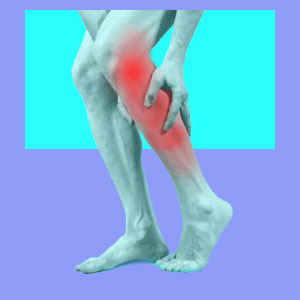
Sciatica muscle imbalance is a diagnosis often made by chiropractors and physical therapists to explain sciatic nerve pain which is not caused by the usual suspect spinal abnormalities. Since the muscles involved are not spinally-located, the expression produced should actually be called pseudo-sciatica, since true sciatica is defined as pain which is sourced within the vertebral column exclusively.
Muscle imbalances can occur, but are actually very rare, despite the epidemic incidence of diagnosis within the complementary healthcare system. Personally, I have seen the muscle imbalance theory abused by care providers more than any other single theoretical causative issue. That being said, it is possible, but unlikely, that leg muscle imbalances will cause sciatica-like symptoms in some patients.
This article will both debunk the myth of muscle imbalances as common and serious health concerns, as well as provide details on how they can truly be responsible for pain in some extreme case profiles.
What are Sciatica Muscle Imbalances?
A muscle imbalance is defined as a soft tissue condition in which opposing pairs of muscles have developed a tendency to favor one set above the other. Muscles are needed to move any bodily part and there are typically 2 sets involved in every movement. One set is used for contraction, while the mated pair is used for extension.
Muscle imbalances describe a scenario in which one set is used or developed far more than the opposing set, leading to muscular length discrepancies and sometimes painful symptoms. These issues are difficult, and sometimes even impossible to prove, making them an ideal diagnostic sciatica scapegoat.
Muscle imbalance theory is highly controversial, since so many diagnoses demonstrate no definitive evidence of a muscular unbalance. Traditional physicians typically take exception to this diagnosis, while chiropractors, osteopaths and physical therapists may or may not embrace it.
Muscle Imbalance Experiences
I was diagnosed with muscle imbalances at the age of 16 and many times thereafter, although the actual muscles implicated varied from doctor to doctor. I was always in excellent shape, qualified as a personal trainer at a very young age and never allowed my muscles to build unevenly. Applying this diagnosis to me was nonsense. However, at the time, I did not know that and bought into the theory, along with the other scapegoats blamed for my pain. This misdiagnosis set the stage for decades of protracted agony for me.
I typically see a variety of ridiculous tests and exercises used to justify the muscle imbalance theory and in later years, confronted several care providers about how it might apply to me. The more I learned, the less they could answer my questions and the more I inquired, the more they became obviously flustered and confused about the diagnosis themselves. Apparently, no one ever thought to question them previously.
Sciatica Muscle Imbalance Help
Unless you have an extremely atypical anatomy, the diagnosis of muscular imbalance probably does not apply to you any more than it ever applied to me. I hate to be cynical, but in my experience, this diagnosis is used to reinforce structural causation and keep those patients without obvious anatomical abnormalities in ongoing treatment for the sheer sake of profit.
The exceptions are people with muscular deficits or abnormalities resulting from extreme injury or a congenital or developmental condition. In these circumstances, you will have no problem getting a variety of doctors to agree on the causative theory, since evidence will be there in abundance.
If you do not fit this profile, but have still been diagnosed with muscular imbalance as the main source of your sciatica, I urge you to learn the facts for yourself. Not doing so is akin to being doomed to a life of virtual slavery to care practices which are not needed and based on an often completely illogical assumption as to the cause of symptoms.




